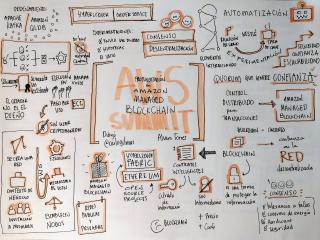
Amazon Managed Blockchain is a fully managed service from AWS that enables you to set up and manage scalable blockchain networks with minimal overhead. It supports two popular blockchain frameworks: Hyperledger Fabric and Ethereum. By abstracting the complexity of blockchain infrastructure management, Amazon Managed Blockchain makes it easier for developers and IT administrators to build applications where multiple parties can execute transactions and reliably share data without requiring a central authority.
Use Cases
Amazon Managed Blockchain offers versatile use cases. For supply chain management, its distributed ledger technology ensures that transactions are updated and accessible across all nodes in real-time, providing transparent, traceable, and tamper-proof records. In the financial sector, the service allows for efficient trade settlements and clears by providing a shared, immutable ledger between multiple parties. Healthcare organizations can use the blockchain to store and share immutable medical records, facilitating easier data sharing while ensuring data integrity and security. Another significant application is in licensing and contracts, where smart contracts can automate and ensure the correctness of contractual terms and processes without requiring manual intervention.
Pricing
The pricing of Amazon Managed Blockchain is highly dependent on the framework and network specifications. For Hyperledger Fabric, you are charged based on the number of peer nodes, the provisioned storage, and data written and read from the network. When using Ethereum, costs are primarily determined by the number of nodes, their instance types, and data transfer. Pricing is pay-as-you-go, which ensures that you are only paying for what you use, making it cost-effective for variable workloads. For detailed pricing, visit the Amazon Managed Blockchain pricing page.
Scalability
Amazon Managed Blockchain is designed for high scalability. It enables the automatic addition or removal of network members or nodes without downtime, thereby easily managing varying throughput requirements on the go. This service also takes advantage of AWS's extensive infrastructure, allowing you to deploy your blockchain network globally across multiple AWS regions, thereby improving latency and availability for diverse user bases.
Availability
High availability is a cornerstone of Amazon Managed Blockchain. Built on AWS's fault-tolerant architecture, the service can span across multiple Availability Zones, ensuring that your blockchain network remains operational even in the event of disruptions within a single data center. The service also offers automatic data replication and backup, guaranteeing data durability and consistency, which enhances the reliability of your blockchain applications.
Security
Security in Amazon Managed Blockchain is robust and multifaceted. It integrates with AWS Key Management Service (KMS) for secure key storage management. Additionally, the service ensures that transactions are encrypted in transit and at rest. Access controls are enforced through integration with AWS Identity and Access Management (IAM), allowing you to define meticulously who can take actions on your blockchain resources. You can also configure private endpoints within a Virtual Private Cloud (VPC), further isolating your blockchain environment and minimizing exposure to the public internet.
Competition
When considering blockchain services, there are alternatives from other major cloud providers. Google Cloud offers Blockchain Node Engine, a service that simplifies the deployment, management, and scaling of blockchain networks. Microsoft Azure provides Azure Blockchain Service, a fully managed service for setting up and coordinating blockchain networks and ensuring security and governance. Alibaba Cloud offers Ant Blockchain, which supports a variety of blockchain network models and is designed to meet the diverse needs of businesses. Each service comes with its own features, frameworks, and pricing models, which should be carefully considered based on your specific requirements.
 Amazon QLDB
Amazon QLDB
 Amazon Managed Blockchain
Amazon Managed Blockchain
 Periodic Table of Amazon Web Services
Periodic Table of Amazon Web Services
 AWS Regions
AWS Regions